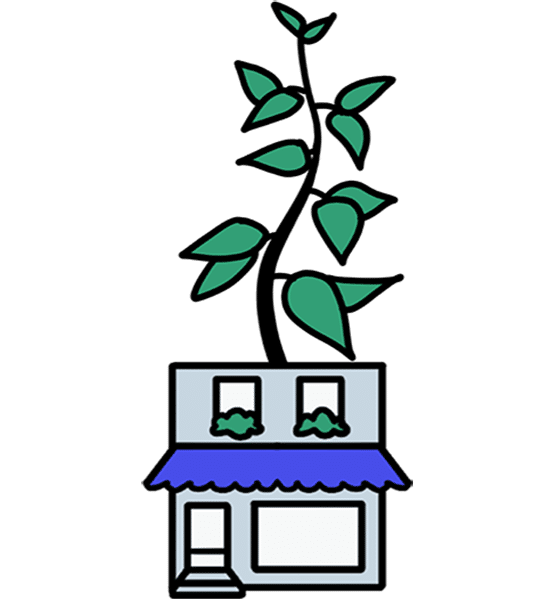See yourself working from your home office, managing an ecommerce business from your laptop?
Thanks to today’s technology, it’s easier than ever to open an online store, whether under your own website domain or through an existing online marketplace. We’ll cover the options and the steps needed for starting an online store that’s profitable.
7 Best Practices for Starting an Online Store
For an online store to be successful, there are critical elements in the creation process you shouldn’t neglect.
We’ll cover the 7 following steps:
- Choose a Specialized Niche
- Consider the Customer Experience
- Plan for Mobile Responsiveness
- Offer Free Shipping
- Develop a Customer Email List
- Provide a Seamless Checkout Process
- Offer a Financing Option to Customers
1. Choose a Specialized Niche
Unless you have an existing online audience of followers, you’ll need to choose a highly specialized niche for your store to attract enough traffic to your site. It may seem like narrowing down your store’s scope would turn away potential customers.
When your store sells very specific products, however, you’ll be able to get traffic from colder leads when they search for your type of items on Google.
For Example
A small niche site, such as Pomeranian grooming products, attracts traffic from a highly targeted customer with a specific need. When they see you’re passionate about Pomeranians and are sharing the best grooming tips on your website, they’re more likely to buy from you.
2. Consider the Customer Experience
The customer’s experience of your online store is key to its success. If your server takes too long to load or the images of products take too long to appear, their experience will be tainted and many will turn away from your online store.
Likewise, the layout of your online store should be clean and easy to navigate. What customers really love, however, is when your ecommerce site is personalized for them. With customer relationship management software or other business software, you can track each customer’s activity on your website and tailor what they see on your store according to their history and what it reveals about their preferences, interests and needs.
3. Plan for Mobile Responsiveness
With so many purchases made from smartphones today, your ecommerce site needs to be seamlessly responsive for mobile. If you sell on an online marketplace such as Amazon.com, then you’re already optimized for mobile, because you’re on a third-party platform.
If you use software such as WooCommerce or an ecommerce platform such as Shopify to build your online store on your own website, then mobile responsiveness is built-in.
While mobile users can shop on their phone’s browser, the experience is even better on a mobile app dedicated to your online store. While it requires overhead costs to work with an app developer, you can do so once you’re able to invest in your business.
4. Offer Free Shipping
Free shipping matters deeply to customers — and with so many online stores offering it, you should be on board, too. Offer free shipping on order sizes exceeding a certain dollar-amount threshold, such as $50 or $75. This encourages customers to make larger purchases, which are more cost-effective for you to ship.
5. Develop a Customer Email List
When a new customer discovers you and decides to buy from your store, you don’t want to lose touch with them. By capturing their email address and adding it to your email list, you can start to build a relationship. You can also give new customers a sitewide discount for joining your email list.
With effective email marketing campaigns, you can deliver compelling calls to action right into your customers’ inboxes. This promotes customer loyalty, as you can continually educate customers about new inventory and offer special loyalty discounts.
Whether you hire a freelancer to cultivate leads with compelling copy or you send out a round-up of your website’s latest blog posts once a week, the most important thing is staying in touch.
6. Provide a Seamless Checkout Process
Your checkout process is a huge make-or-break element when starting your online store. It’s important to make it as quick and hassle-free as you can because if it gets frustrating or lengthy, customers are going to abandon their carts.
A seamless checkout process with as few clicks as possible improves your store’s customer experience and helps increase conversions. Offering multiple payment methods also reduces abandoned carts and makes checkout more convenient. In addition to accepting all major credit cards, you should also offer payment methods such as PayPal or Stripe.
7. Offer a Financing Option to Customers
Whether you’re selling high-ticket items, customer financing can go a long way in increasing your store’s conversion rate. Customers love seeing an option to break up payments into manageable amounts paid over time because they can get the product they desire sooner.
Meanwhile, your business can receive the full sale amount up front, when you partner with a financing company. In exchange for transaction fees, it takes care of financing from the application process to collecting payments.
Starting an Online Store With No Money?
If you don’t have startup funds you can put into your online store or no inventory you can start selling, you still have several options.
Dropshipping Business
Dropshipping is an online business model where you sell products on your store, but a third party handles the inventory, packing and shipping to customers. There’s no need to purchase inventory upfront—you simply get a profit margin of each sale. That means you can have your business up and running quickly without a warehouse or employees.
Dropshipping platforms provide the software you need to sell your products on social media, pop-up shops and more. All you need to do is add the products and descriptions. You can start selling on Shopify, Big Cartel or similar ecommerce platforms using their free trial or free version.
Sell Products as an Affiliate
You can start an affiliate marketing business, where you promote existing products and receive a commission. This lets you skip the steps of creating a product or acquiring inventory, and get straight into marketing the products.
By creating content that showcases the products you’re selling on your affiliate site, you can capture targeted traffic looking for those products. When followers see your helpful product reviews, it can lead them to buy products from your online store.
You can have the products displayed on your website like an online storefront, but you can disperse affiliate links in your online content, including social media and in video-embedded links.
Creating a Digital Product
Another way to reduce the overhead costs involved with inventory is to create a digital product. You can outsource the creation of an e-book or a paid app to a freelancer. To cut costs, you can put together an online course using the technology you already have. Then, sell your digital products to people who are searching for information on Google.
While you may have the goal of selling physical products, you can start with a digital product that attracts a niche audience and then sell physical products to the same audience once you’ve acquired inventory.
Opening an Online Store: Examples
Looking for inspiration? Here are some examples of online stores you can launch.
Online Clothing Store
Shoppers go online to buy apparel now more than ever. With dropshipping, you can start selling clothes online without having inventory.
Instead of having the clothes made yourself, you can hire a freelancer to create graphics to go on T-shirts, tank tops, pajama bottoms and other clothing you want to sell. Then, use a print-on-demand platform such as Redbubble, Printful or Merch by Amazon.
You can develop your own brand and promote your clothing on social media platforms such as Instagram, Pinterest or wherever your target customer hangs out.
Protein Supplement Store
The protein supplement niche is alive and well online. By being a resource for people looking to build muscle mass or improve athletic performance, you can build a highly-targeted following on social media platforms as well as your blog or YouTube channel.
Become affiliated with protein bar, powder and drink companies and show your audience the products you use and promote them in a relatable way.
Subscription Box Model
To promote customer loyalty and benefit from returning business, consider using a subscription model for your online store. With this model, you send out a package in the mail each month or every other month to subscribers who are billed for recurring payments.
This setup works well for food and drink products as well as apparel, beauty products and niche interests such as yoga or mountain climbing. The key to a good subscription box is to include the element of surprise: The box should include at least one or 2 items the customer isn’t aware of.
It’s also crucial to have aesthetically-appealing packaging that speaks to your target market.
The Perks of Setting Up an Online Store
Starting an online store lets you go into business rather quickly without much overhead. You can fulfill orders on a 24/7 basis without hiring one employee. Plus, you can serve the entire world instead of just your local area and rapidly scale your business to meet growing customer demands.












